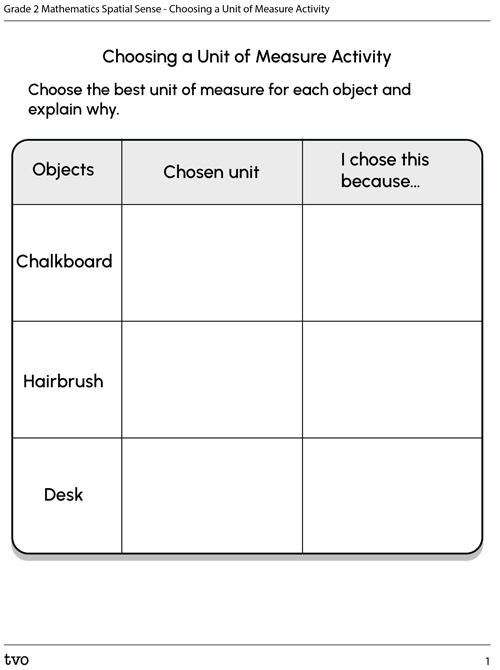Minds On
Would you rather?
Let’s explore the bookshelf and ways to measure its length.

Brainstorm
What do you think?
After exploring the bookshelf, reflect on the following question:
If you needed to measure the length of the bookshelf, would you rather use markers or paperclips? Why?
Record your ideas in a notebook or a method of your choice.
Action
Non-standard units of measure
Non-standard units of measure come in many different sizes.
Some are small, some are medium, and some are large.
Selecting an appropriate unit of measure is important. Let’s continue to explore why.
Size of a unit of measure
Examine the following image.

More small paperclips than large paperclips are needed to measure the length of a computer keyboard.
Student Tips
Selecting a unit of measure
- It is important to select a unit of measure that is smaller than the object that you are measuring.
- Keep in mind that the smaller the unit, the more units you will have to count.
- Also keep in mind that the larger the unit, the less units you will have to count.
For example: the length of the computer keyboard is 6 large paperclips, or 9 small paper clips.
Let’s return to the bookshelf from the Minds On section.


We could use markers or paperclips to measure the bookshelf. But the paperclips are small, and it would take longer to measure the bookshelf.
Choose a unit of measure
Explore the following images:



Choose the best unit of measure for each object and explain why. Complete the Choosing a Unit of Measure Activity in your notebook or using the following fillable and printable documents. You can also use a method of your choice.

Press the Activity button to access Choosing a Unit of Measure Activity.
Activity (Open PDF in a new tab)Which one?
Select the correct answer, then press 'Check Answer' to check how you did.
Press ‘Let’s check!’ to reveal the correct units of measure for each object.
- For the whiteboard, the best unit of measure are the markers.
- For the hairbrush, the best unit of measure are the snap cubes.
- For the desk, the best unit of measure is the tape roll.
Consolidation
Let’s measure!

- Select five objects to measure.
- Then, select two different non-standard units which can be used to measure the length of the
objects.
- Examples of non-standard units of measurements you can use:
- paper clips
- markers
- popsicle sticks
- marbles
- Examples of non-standard units of measurements you can use:
- Record your objects and units of measurement using the table or another method of your choice.
Complete the Let’s Measure Activity in your notebook or using the following fillable and printable document. You can also use a method of your choice.
| Objects | First unit of measure | Second unit of measure |
|---|---|---|
Press ‘Activity’ to access Let’s Measure Activity.
Measurement connections
Use the following questions to reflect on your measurements and/or findings:
- Compare the size of the units you chose, and the number of units needed to measure your first object.
- What non-standard units did you use to measure the objects?
- Which non-standard unit was easier to measure with? Why?
- Which non-standard unit was challenging to measure with? Why
- Which object might be the longest? Explain.
- Which object might be the shortest? Explain.
Record your ideas in your notebook or another method of your choice.
Reflection
How do you feel about what you have learned in this activity? Which of the next 4 sentences best matches how you are feeling about your learning? Press the button that is beside this sentence.
I feel...
Now, record your ideas about your feelings using a voice recorder, speech-to-text, or writing tool.


